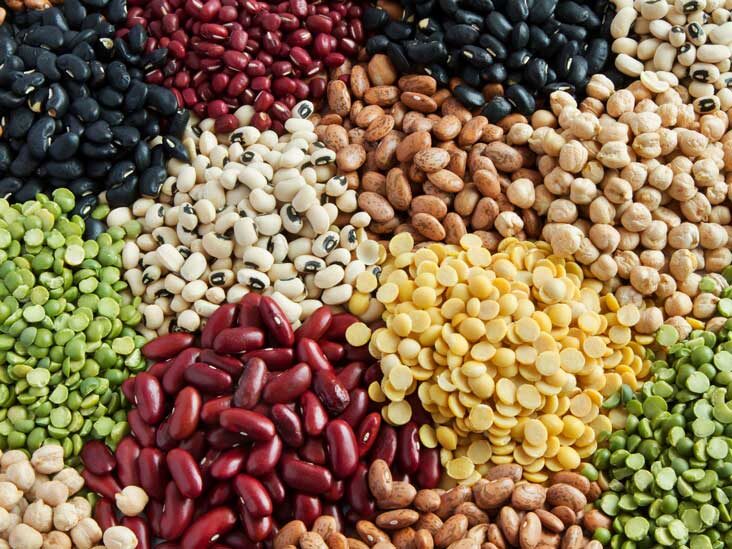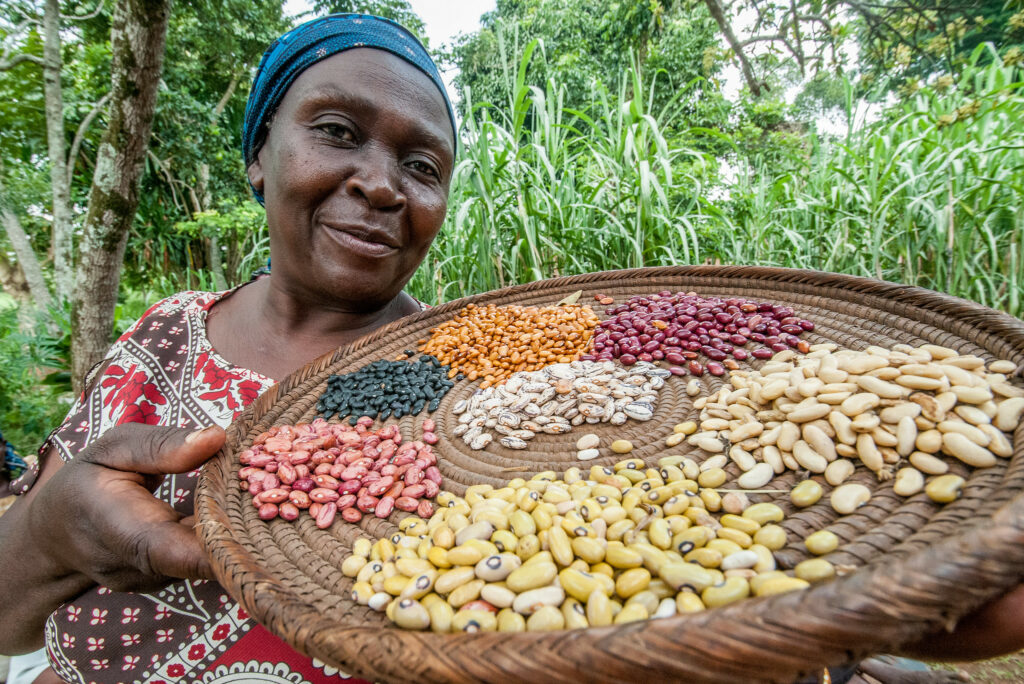
Legumes are versatile crops with lots of uses from a source of food to providing income, being animal feed and some legume varieties are used as medicine and fuel (Muoni et al., 2019, Akpalu et al., 2013).
Legumes have a good chance to enhance food and nutrition security in SSA because they are related to the local community’s culture and food consumption patterns. Legumes are nutritious and are able to adapt to rough climatic conditions and poor marginal soils (Abberton et al., 2022).
Legumes available and cultivated in SSA include African yam bean, bambara groundnut, cowpea, groundnuts, soybean, chickpea, pigeon pea (Stanton et al., 1966). African yam bean and bambara are part of the unpopular indigenous under-utilized orphan legumes including Kersting’s groundnut, Lima bean, and Jack bean (Popoola et al., 2022).

The inclusion of legumes in a diet could offer a lifelong solution to SSA malnutrition, hunger, and protein deficiencies because legumes are nutrient-dense, and provide great quality protein & micronutrients (Popoola et al., 2022).
Besides nutritional benefits, legumes also have environmental benefits such as enhancing soil moisture, and water effectiveness, covering the soil, reducing soil evaporation, fixing soil nitrogen, and controlling erosion and weed (Vidigal et al., 2019, Popoola et al., 2022)
Legume challenges include long cooking time, poor shelf-life, low yield, sensitivity to daylight, presence of potent anti-nutritional factors, these challenges have discouraged utilization and production because farmers are less interested in investing their time and energy in cultivating and producing legumes (Nnamani et al., 2017; Popoola et al., 2020, Popoola et al., 2022).
Other challenges include poor market price, poor demand, lack of buyers, lack of improved varieties, and inadequate capital that have hampered their production (Khan et al., 2021). To deal with these challenges and get benefits from legumes Popoola et al. (2022) suggest that there is a necessity for systematic cultivation, wide acceptance, increased utilization, strategic crop improvement and funding, and the creation of global and local market spaces to improve consumption across the SSA.
References
Abberton, M., Paliwal, R., Faloye, B., Marimagne, T., Moriam, A. & Oyatomi, O. A. 2022. Indigenous African Orphan Legumes: Potential for Food and Nutrition Security in sub-Saharan Africa. Frontiers in Sustainable Food Systems, 83.
https://www.frontiersin.org/articles/10.3389/fsufs.2022.708124/full
Akpalu, M., Atubilla, I. & Oppong-Sekyere, D. 2013. Assessing the level of cultivation and utilization of bambara groundnut (Vigna subterranea (L.) Verdc.) in the Sumbrungu community of Bolgatanga, Upper East Region, Ghana. International Journal of Plant, Animal and Environmental Sciences, 3, 68-75. https://www.researchgate.net/publication/284157445_Accessing_the_level_of_cultivation_and_utilization_of_Bambara_groundnut_Vigna_subterranea_L_in_the_Sumbrungu_community_of_the_Upper_East_Region
Khan, M. M., Rafii, M. Y., Ramlee, I. S., Jusoh, M., and Al-Mamun, S. (2021c). Bambara groundnut (Vigna subterranea L. Verdc): A crop for the new millennium, its genetic diversity, and improvements to mitigate future food and nutritional challenges. Sustainability 15, 1–27. doi: 10.1038/ s41598-021-93867-5. https://www.mdpi.com/2071-1050/13/10/5530
Muoni, T., Barnes, A. P., Öborn, I., Watson, C. A., Bergkvist, G., Shiluli, M. & Duncan, A. J. 2019. Farmer perceptions of legumes and their functions in smallholder farming systems in east Africa. International journal of agricultural sustainability, 17, 205-218. https://pure.sruc.ac.uk/ws/portalfiles/portal/16614760/15075.pdf
Nnamani, C. V., Ajayi, S. A., Oselebe, H. O., Atkinson, C. J., Igboabuchi, A. N., and Ezigbo, E. C. (2017). Sphenostylis stenocarpa (ex. A. Rich.) harms., a fading genetic resource in a changing climate: prerequisite for conservation and sustainability. Plan. Theory 6:30. doi: 10.3390/plants6030030. https://europepmc.org/article/med/28704944
Popoola, J. O., Aworunse, O. S., Ajani, O. C., Ojuederie, O. B., Adewale, D. B., Oyatomi, O. A., Eruemulor, D. I., Adegboyega, T. T. & Obembe, O. O. 2022. The exploitation of orphan legumes for food, income, and nutrition security in sub-Saharan Africa. Frontiers in Plant Science, 1454. https://www.frontiersin.org/articles/10.3389/fpls.2022.782140/full
Popoola, J., Ojuederie, O., Omonhinmin, C., and Adegbite, A. (2020). “Neglected and underutilized legume crops: improvement and future prospects,” in Recent Advances in Grain Crops Research. eds. F. Shah, Z. Khan, A. Iqbal, M. Turan and M. Olgun (UK: IntechOpen), 123–144. doi: 10.5772/ intechopen.87069
Stanton, W. R., Doughty, J., Orraca-Tetteh, R. & Steele, W. 1966. Grain legumes in Africa. Grain legumes in Africa.
Vidigal, P., Romeiras, M. M., and Monteiro, F. (2019). “Crops diversification and the role of orphan legumes to improve the sub-Saharan Africa farming systems,” in Crop Production. (ed). M. Hasanuzzaman (UK: IntechOpen), 1–21. https://www.intechopen.com/chapters/68083
